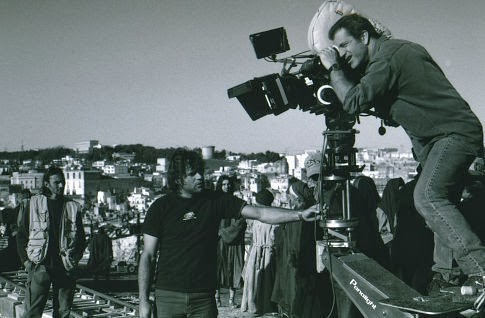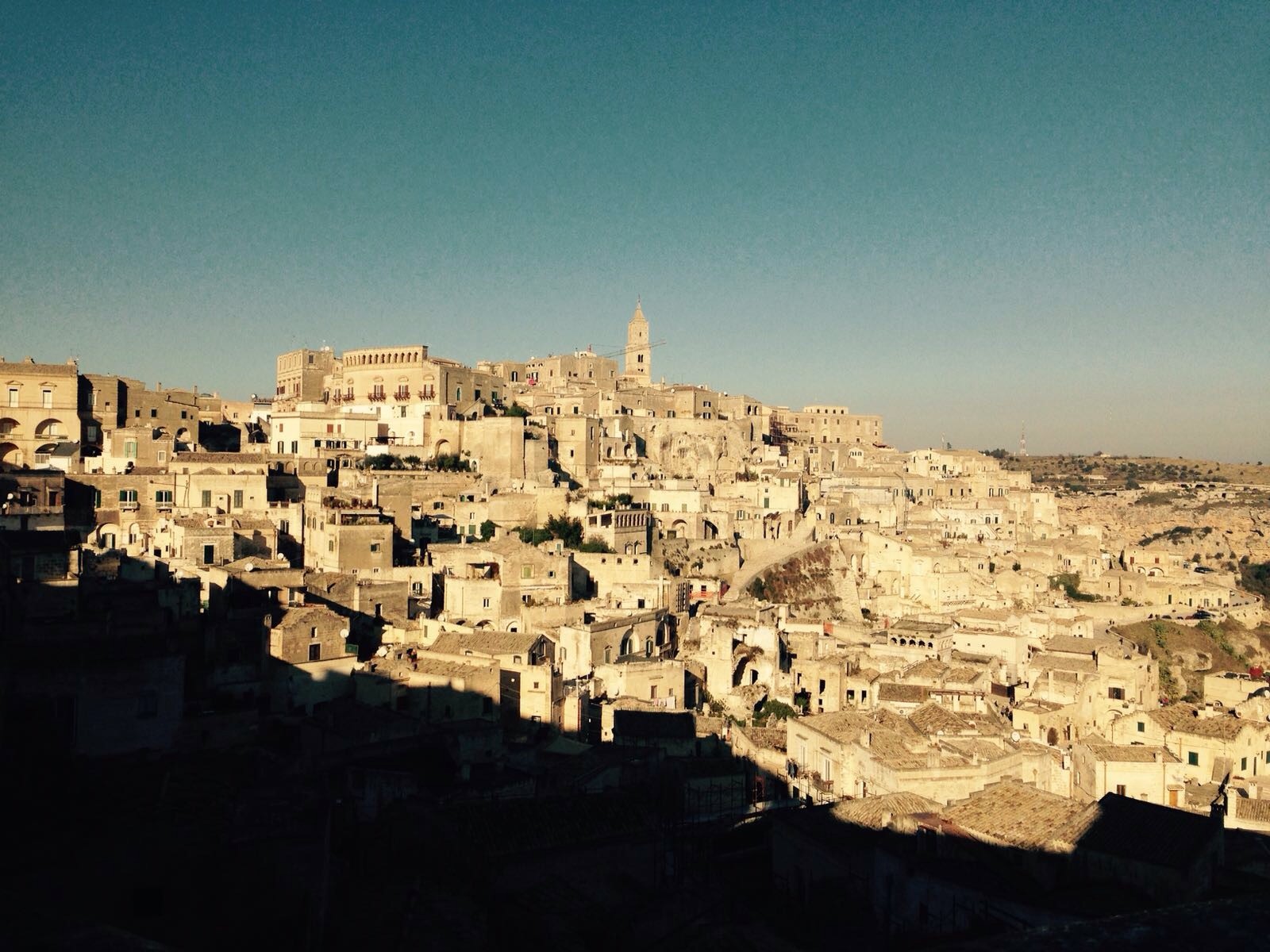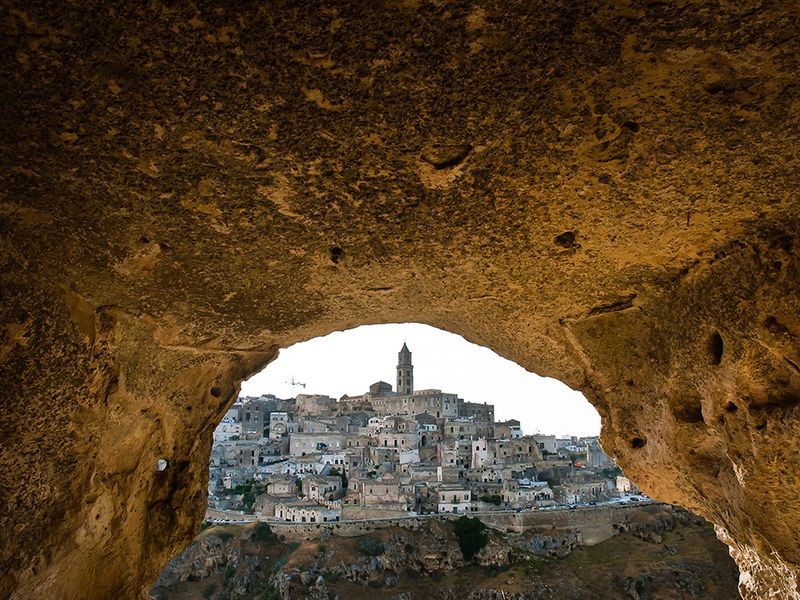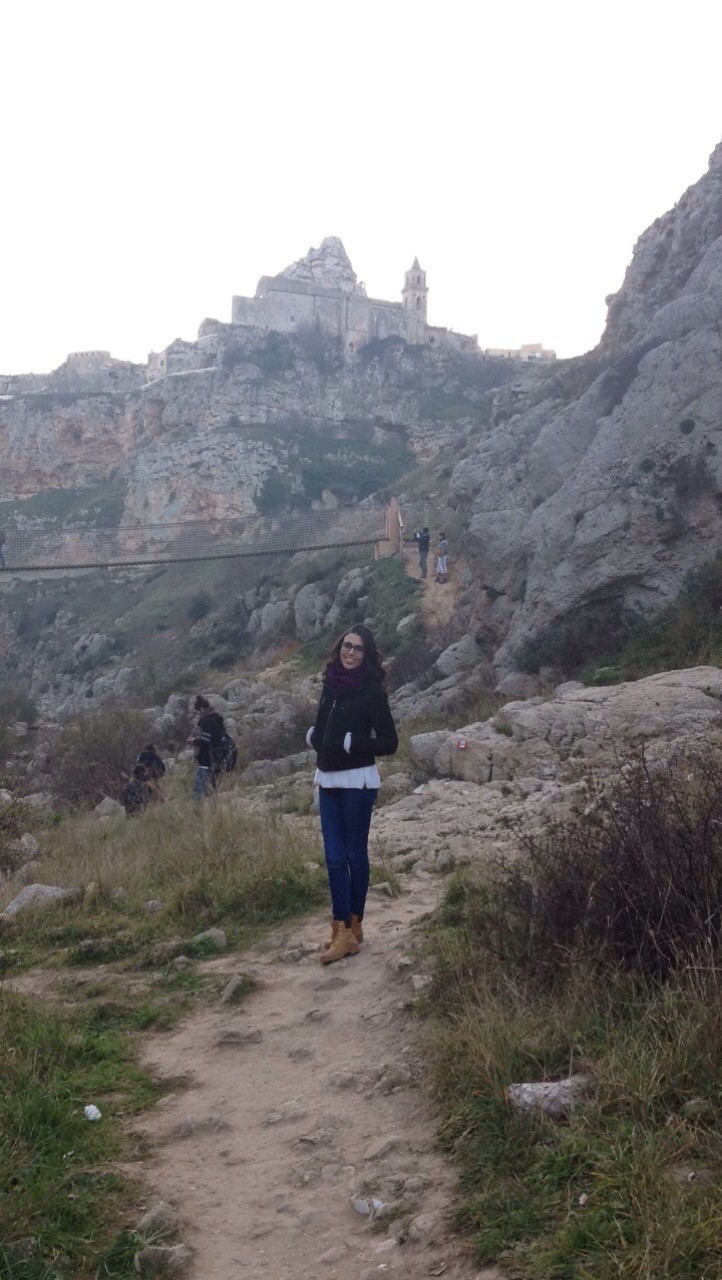Discovering a small town in Italy: Matera
The celebrity city
If you're somewhere on the southeast coast of Italy, I recommend you to rent a car and take a day to see Matera. This city is ancient and it is known for being the filming location of many movies, most notably The Passion of the Christ.

The above photo, showing the crucifixion scene, is overlooking the ancient caves on the mountain, which is on the other side of the main city when you coss the ravine in Matera.

This film, directed by Mel Gibson, is iconic not only for Christians but it is a powerful and impressively made movie that all can appreciate. For me the most impressive aspect of the movie is that nearly the entire dialogue is spoken in Aramaic, which is the ancient Semitic language spoken by Jesus.
The reason for why Matera was used as the film's setting is because it greatly resembles Jerusalem. This is probably because Matera is the third oldest continuously inhabited city in the world (since around 15, 000BC), meaning that the stone architecture is extremely old and easily fools you to believe it resembles the ancient Middle East.

This is a panoramic view of the old Italian city, Matera.
Matera in December
I went in December, which is not a bad time to go because during this month they are known to put on a well-made reenactment of the Nativity, which is a very popular attraction for both tourists and locals.

At night throughout the city, you can see snippets of some of the acting of the Nativity reproduction. To see the whole thing, you have to pay, but this particular scene that I saw (in the photo above) was free. It was only a few minutes long, but the costumes are beautiful and worth seeing.
As you walk through the streets during this cold time of year, you'll want to stop at the street vendors and buy their roasted chestnuts, candied pecans, and other goodies to keep you satisfied as you continue your stroll through the old city.
There are many interesting shops and stores to go into, and many of them are artisan shops selling their own art. I enjoyed going inside them just to look around and explore. There was one particular store where inside, there is a small window opening into a cave-like room with a bucket hanging in the middle of it. The idea is to throw coins in there, and try to get them inside the "bucket of luck". Evidently many people had thrown money in there, some of it landing in the bucket (they got lucky), and the rest of it spewed all over the floor.
This was the most heart-breaking part of the trip for me. I could reach my hand in the room, but I was nowhere near able to touch any of that money just laying there. It was so close, in front of my eyes, yet so far away. If nobody had been around, I would have squeezed myself in and jumped through the window to fill my bag with coins. It's money just laying there! Ok, the owner probably does collect it sometime later, but it's still so painful for me to see so much "unclaimed" money in one place. Maybe I was meant to be a pirate.
The caves
If you are physically able, and like naturey things, I recommend going to see the ancient caves of Matera. The caves can be seen from the main part of the city, across the ravine and lining the opposite mountain side, looking from far away like small round holes in the rocks. These caves were inhabited by people since the Paleolithic times up until about the late 1950s, when they were finally evacuated from terrible living situations. Unfortunately with changing times, Matera's civilization became a slum, and the people living there were living in extreme poverty.

From the outside, the caves just look like simple stone hobbit holes carved in the mountain's side, but in reality, the designs within these outer walls are extremely intricate: tunnels connect the homes and water wells within, and the inner walls and architecture are quite artistic. This outside view is apparently only the tip of the iceberg.

In the photo above, you can see the view of the main city of Matera from the inside of one of the caves on the other side of the ravine.
The recent history of these caves is that in the 1900s, the people living there were living without running water or heat, and many suffered and died from many diseases and hunger. Actually, up until recently, the entire city of Matera was seen as "the shame of Italy" because it was so poor. Now, Matera is viewed as a gem, named a World Heritage site in 1993 by UNESCO, and set to be European Capital of Culture in Italy in 2019. No longer are the ancient caves viewed as slums; tourists go there and pay money just to be able to stay in one of the cave hotels. The transformation of the city and its reputation is amazing!
If you decide to go check out the caves, make sure you give yourself enough time to walk down the steep hill/mountain, cross the bridge, walk up the other side, see the caves, and do the same amount of walking down and up the mountains to come back before the sun goes down. There are no lights along the trail, so if it's already dark and you haven't got back yet, things could get a little complicated.

In this picture, you can see how the mountain trail is. It is important to bring good walking shoes and be physically able to walk the steep, uneven trail (down and up the mountains, twice). We walked down the mountain trail (coming from the right side of the picture), and the ravine was on the left side of us, although you cannot see it in this particular picture. Continuing along this path, we got to the bridge (you can see it here), which crosses the ravine and connects the two bases of the mountains. We crossed the bridge but unfortunately had to stop our journey there and turn back.
The sun was just about to set, or maybe it had just set already, and we had not even walked up the second mountain to reach the caves. I wanted to continue so badly, but I knew that within twenty or thirty minutes it would already be very dark out, and we would have needed at least one more hour or more to complete our journey and admire the caves. It would have been impossible with no light. I was so disappointed, and I promised myself that the next time I return here (I hope I do! ), I will make it my priority to see the caves and start the hike early in the day to make sure I have enough time.
In any case, if you find yourself at the bridge and you are able to continue your journey, you just have to cross the bridge and continue up the path to the caves on the other side. It's quite tiring, and I was huffing and puffing even though I only completed half the hike, especially since I had not exercised in a long time! At the top of this picture shown above, you can see the church sitting on the mountain. Inside it is small, but peaceful and calm.
Photo gallery
Content available in other languages
Share your Erasmus Experience in Matera!
If you know Matera as native, traveler or as exchange student... share your opinion on Matera! Rate different characteristics and share your experience.
Add experience →






















Comments (0 comments)